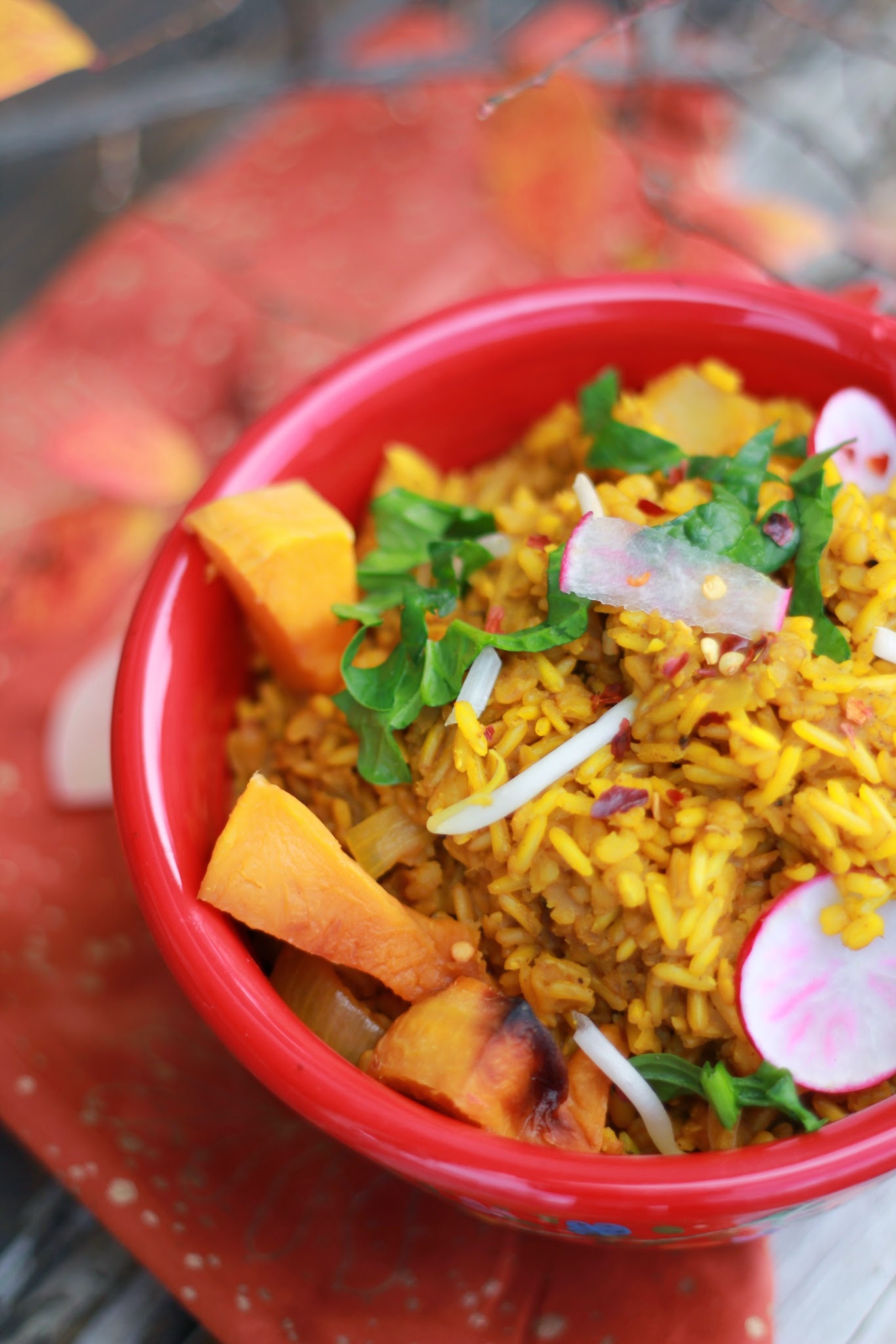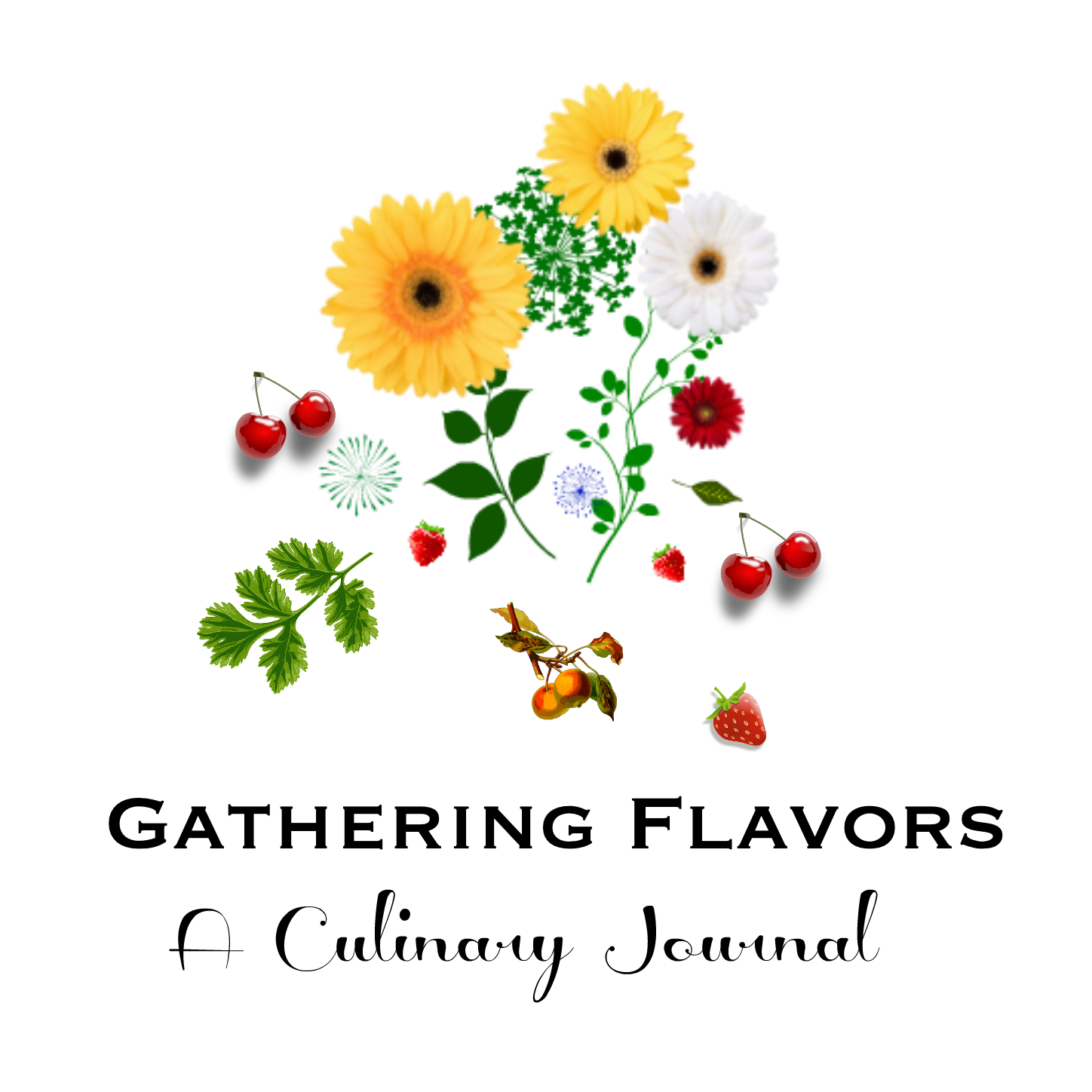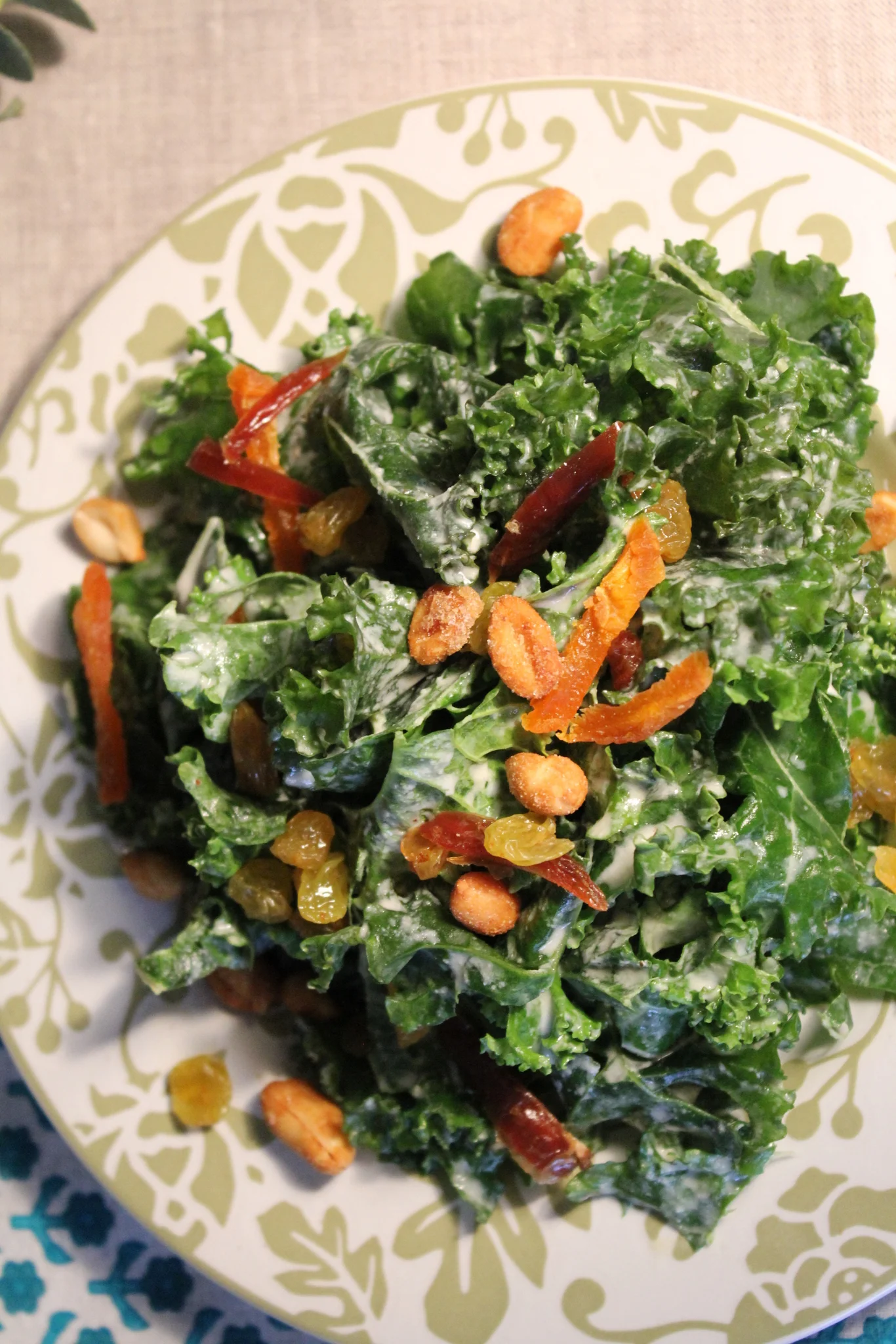After the Fall and Colorful Kitchari


Hello All:
It’s over. The leaves have fallen. What was a glorious foliage season here in northern New England, has given way to bare branches, fields blanketed in brown, shorter days, and cooler nights. The once extravagant and color-filled leaves that charmed the senses and inspired my photography, have changed. Gone from the grandeur of the tree tops, they cover hiking trails instead, protecting them from the elements. The neighborhood in a frenzy, we rake them into tall piles, readying them for more utilitarian but no less grand purposes. We spread them over our vegetable gardens, put to bed for a winter’s rest, or layer them into compost for the next growing season. They make their own transition as we make ours.
I miss the glory of the color already and don’t look forward to the chill of winter. It’s been tempting to give into feelings of sadness and loss as a result. Rather than brush these feelings away with the decomposing leaves, I chose a different path this fall: to allow myself to feel the sadness and face the loss while participating in an Ayurvedic cleanse. Ayurveda, the “Knowledge of Science of Life”, is considered by many scholars to be the oldest healing science. Seasonal cleanses are a time to eat in a prescribed way and practice daily rituals of choice. Although not religious in nature, an Ayurvedic cleanse is much like a fast at the Jewish holy day of Yom Kippuror the Muslim traditional Ramadan. It’s a way to reset your biological rhythms at a time when the world is resetting itself, renewing itself. It was a challenge, not as easy a path as the cleanse I did last spring when the seasonal shift was bringing light and warmth. But the struggle was part of the process and as a result I feel both lighter and more grounded. I feel more in tune with the world around me. I feel more connected to my inner self and to my loved ones who supported me through the struggle.
What do you do to nurture yourself during periods of transition?
At the center of the Ayurvedic cleanse diet is a dish called Kitchari. Delicately seasoned with Indian spices, this aromatic dish of brown rice and mung dal (yellow split mung beans) forms the basis of a satisfying, nutritious and grounding meal. For fall, I ate mine accompanied by roasted butternut squash, ruby-red beets and steamed chard. It’s a bit of heaven in every bite. It is a dish that can be eaten throughout the year.
I look forward to seeing you in my kitchen, gathering flavors, soon.
Dena
The Colorful Kitchari recipe that follows is my personal favorite way to make it year round. There are many variations on this basic recipe, so tailor it to suit your own tastes. For purposes of an Ayurvedic cleanse, please consult an Ayurvedic professional both for the correct way to prepare the kitchari and to aid you with your cleanse. Susan Reade, a Certified Health and Nutrition Counselor, is my guide and a wonderful resource. She works with clients in the Upper Valley and around the world.
I look forward to seeing you in my kitchen, gathering flavors, soon.
Dena
COLORFUL KITCHARI
Yield: 4 Servings
Ingredients:
- 1 tablespoon clarified butter (ghee) or olive oil, or a combination of the two
- 1 tablespoon garam masala
- 1/2 cup long grain brown basmati rice
- 1/2 cup dal (yellow split mung beans)
- 1 stick cinnamon
- 1/4 inch cube fresh ginger, rinsed and peeled as needed
- 4 cups water or vegetable broth
- Red pepper flakes and sea salt, to taste
- Garnishes: Cooked seasonal vegetables, fresh herbs, lemon juice and zest (about 1/4 cup per person)
Directions:
- Preheat oven to 325 degrees F.
- Heat a large soup pot on the stove top and add the clarified butter or olive oil. Heat to a sizzle then add the garam masala. Gently brown the spice mixture.
- Add the rice and mung beans. Stir to coat with oil and spices. Brown until the rice becomes translucent, stirring all the while. This should take just a few minutes. Add the cinnamon stick and fresh ginger. Stir one more time.
- Add the water or stock. Bring the liquid to a boil then stir the contents of the pot one more time. Cover tightly and place in the preheated oven.
- Bake until all the liquid is evaporated, about 45 minutes.
- Remove the pot from the oven. Using a wooden spoon, stir the kitchari with red pepper flakes and sea salt, to taste.
- Divide between 4 bowls and garnish with seasonal vegetables.
- Enjoy.
One Year Ago: Autumn Butternut Squash Soup





